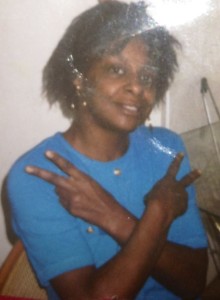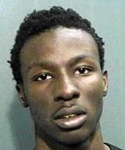By Meredith Gorman, Mackenzie Nichols, and Alec Cheung
The murder trial of Phillip Carrington, who is accused of strangling and murdering his ex-girlfriend, 47-year-old Celestine Walker, continues as the prosecution presenting evidence from Walker’s apartment and DNA evidence as they make their case against Carrington. 
On Tuesday, senior forensic analyst Barbara Leal told jurors about the results of DNA tests performed on a sample that investigators collected from under Walker’s fingernails, identified as the suspect’s DNA, and a sample of 50-year-old Carrington’s DNA.
Leal then testified about the highly specific scientific and statistical testing she performed on the samples, which revealed that 99.8 percent of African American males could be excluded from the DNA profile. Carrington, however, could not be excluded because his DNA matched the suspect’s DNA on multiple levels of the tests Leal performed.
On Friday, Boston Police criminologist Deborah Kosiorek testified about the fingerprints she analyzed at the 34 Heath St. crime scene.
The prosecution asked Kosiorek to explain her process for examining latent fingerprints, and moved on to ask her about specific fingerprints found in the apartment. Carrington’s fingerprints were found on a bottle of Natural Ice beer, a Pepsi soda can, an ash tray, and a television antenna.
The prosecution focused heavily on the significance of the fingerprints found on the Natural Ice beer can. The victim’s fingerprints were found on a Pepsi soda can.
Kosiorek elaborated on her findings, telling the jury that there were fingerprints from two other men found around the apartment, but Carrington was ultimately named the primary suspect.
When Carrington’s defense attorney, Marty Murphy, questioned Kosiorek, he argued that since none of the objects presented by the prosecution were used as murder weapons, the fingerprints found on the beer bottle, soda can, ash tray, and television antenna are unimportant.
That afternoon, prosecutors showed two video recordings of Carrington’s interview and interrogation to the jury on Friday. The first one occurred before Carrington was officially arrested and voluntarily came to the police for questioning, a fact that he repeated throughout the two videos. According to Carrington in the first video, he was released from jail after his girlfriend, Walker paid off his $240 bail. Carrington said he later helped Walker move into her new home on Heath Street, and spent the evening at Walker’s daughter Ashley’s house as it was Mother’s Day.
There were several inconsistencies in Carrington’s account of the events leading up to Walker’s murder. Carrington first stated that he went back to Walker’s place for four days after Mother’s Day in 2013, but later took it all back and said he never saw Walker again after May 5. He also stated at first that he had only had sex with Walker twice on the fifth, but stated in the second interview that he had continued to have sex with Walker until Wednesday of the following week.
Throughout both the videos, Carrington kept alluding that Walker’s murderer was a drug dealer who lived across her street and sold her cocaine and marijuana. “I know who did it,” said Carrington, “It was the same person who killed her brother and sold her drugs.”
Carrington’s trial continued Wednesday and was expected to last through the week.






